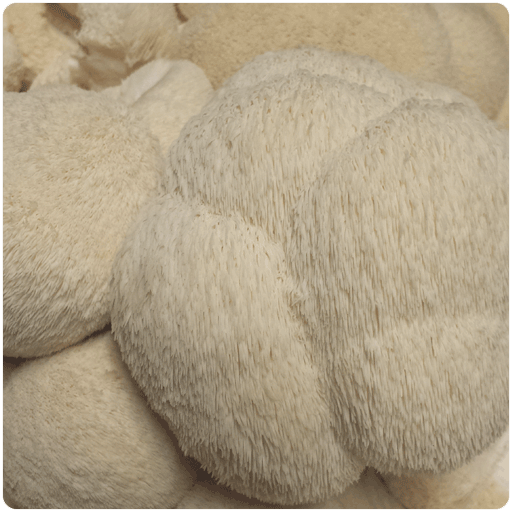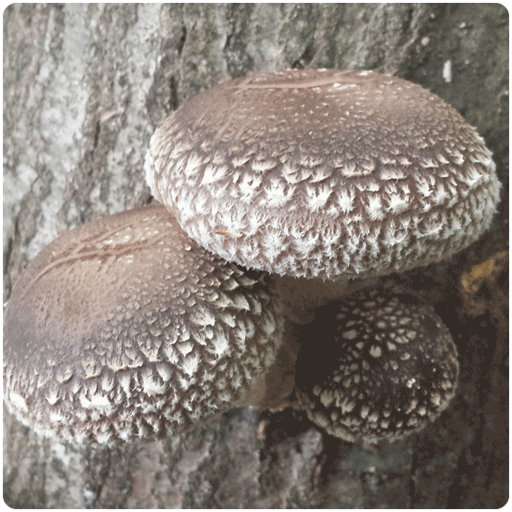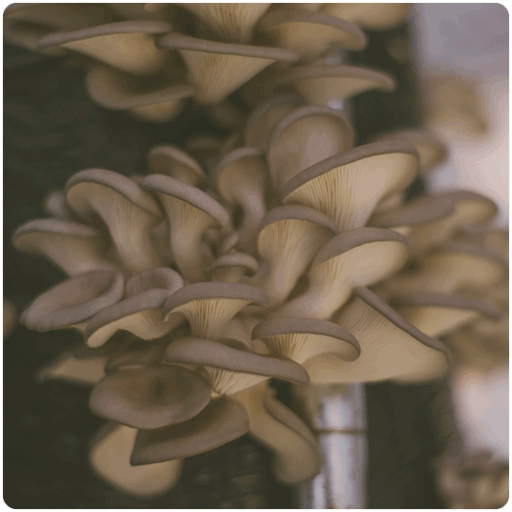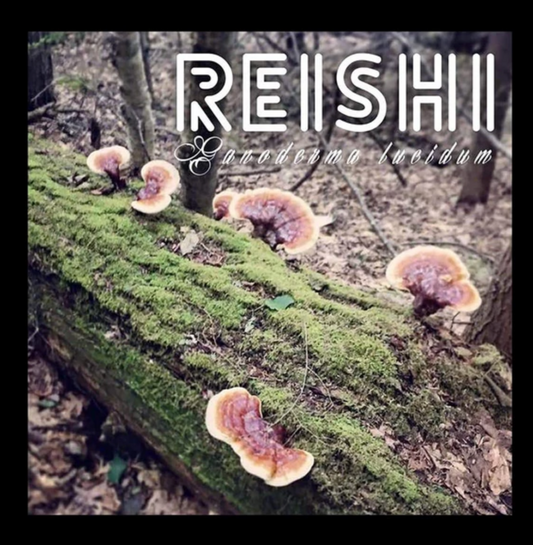FUNGI ALLY MUSHROOM PLUGS
Mushroom plug spawn is best for inoculating wood logs or stumps. Mushroom plugs are made of 1” birch dowels covered with mushroom mycelium. This type of spawn is easy to handle and no extra tools are necessary. It is produced year-round in a sterile facility to ensure the highest-quality spawn. The spawn run and inoculation tend to take a little bit longer but if you are doing 40 logs or less it is likely the best bet for you. Spawn may take 2-3 weeks to ship during spring 2021 due to order volume and covid19 precautions. (Quantity of 100, 500, or 1000 available.)
Instructions for log cultivation using mushrooms:
Log Selection- The first step to mushroom cultivation on logs is cutting and selecting logs to grow on. Logs are best cut between November and March. In trials logs that were cut in October and allowed to sit until April for inoculation had much faster spawn run than logs cut later in the winter. In some cases logs were fruiting in the same year as inoculation. It is okay to cut at any time of year but yields and colonization time are affected.
A Cornell study showed yields were highest from logs cut and inoculated in winter and spring respectively and from logs cut in the fall and inoculated the fall of the following year. Cornell did not look at cutting in the late fall and inoculating in the spring. The best results are achieved when logs are sourced in the fall when 30% of leaves have changed color.
If logs have been sitting for 2+ months it is good to rehydrate them before inoculating by soaking them in water for 3-6 hours. The bark of the logs should be as intact as possible; avoid logs with large strips of bark removed. Dense hardwoods like oak, sugar maple, and beech are great species to use. Logs with a diameter of 3-8 inches that are about 4 feet long are ideal. Logs will be moved several times during the cycle of growing shiitake so sizes that are reasonable to move are important. Smaller logs colonize and fruit faster than larger logs. The last factor to think about during log selection is the ratio of sapwood to heartwood. Logs with a higher ratio of sapwood will offer more food for the shiitake to digest and offer a larger yield.
Source Spawn- Sourcing strain and spawn is a key factor in abundant fruiting. Using LE46 on logs is recommended. 100 dowels can inoculate 2-3 logs.
Drill Holes- For mushroom plugs, use a 5/16 drill bit to drill 1-inch deep holes. If you are just inoculating two or three logs a regular corded drill will work fine. If you are inoculating 25+ logs and plan to do this year after year it is worth it to purchase a modified angle grinder. The angle grinder runs at about 10,000 rpm while a drill runs around 3,000 rpm. This makes the angle grinder MUCH easier and faster - similar to the difference between using a screwdriver and a drill! To drill the holes, start about 1 inch away from the end of the log. Drill again 6 inches down the log. Continue to space holes every 6 inches down the length of the log. Start the next row of holes 2 inches away from the previous row, spinning the log around. The holes should be offset, so now you are drilling 2 inches below the original line and in the middle of the previous holes. Drill holes all the way around the circumference of the log so you end up with a diamond pattern.
Inoculate- This is the point where you add spawn to the log. Simply place the mushroom plug on the hole and then tap it in with a hammer. The mushroom plugs should be snug against the sides of the holes and be flush or slightly sunken below the surface of the log. When the spawn is slightly sunken below the surface it makes a nice area for the wax to pool and seal. This sunken seal will stay protected and last longer than wax that is protruding outside the layer of bark.
Wax- Melt wax and seal the holes with the hot wax. For the waxing process, cheese wax or beeswax is typically used. These waxes hold form as temperatures fluctuate and are a much better option than clay or paraffin wax which tend to crack. If the wax cracks or little pin holes are left, spawn can dry out and die. The wax prevents the spawn from drying out and keeps other fungi out of the log. Depending on the scale of operation, wax can be applied with a cotton ball type material on the end of a stick, a paint brush, or a specialized tool for applying wax.
Storage and Maintenance- Logs should be kept out of the sun and wind. North sides of houses and sheds are good places. Under conifer trees is a great place to store your logs. Deciduous trees allow sun in 6 months of the year so they do not provide ample year-round shade. Keep the logs off the ground on pallets or resting one end on another log. If the logs seem to be drying out, soak them for 4 hours. You can tell they are drying out if the cracks on the end easily allow a dime to be inserted into them. Spawn run, the process of the mycelium growing out into the log, typically takes 12-18 months.
Fruiting- After 12-18 months the mycelium should be grown throughout the entire log. The fruiting period in New England is between June and September. In late June of the year after inoculation, soak the log for 24 hours. Mushrooms should fruit within 7-10 days. Harvest, rest the log for 7-10 weeks, then soak and harvest again. This can be repeated 2-3 times a year. Depending on the diameter of the log, it will continue to fruit for 3-7 years!
 Sold out
Sold out Sold out
Sold out




